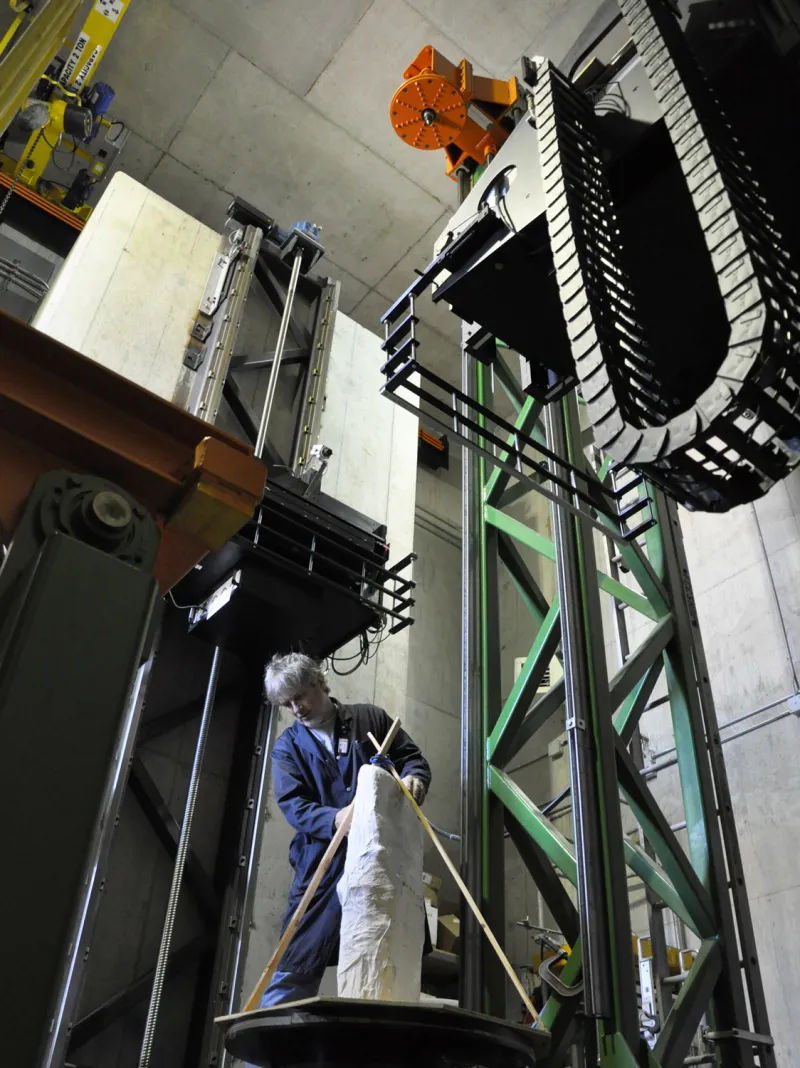Fossils Get a CT Scan

When paleontologists, like the Smithsonian National Museum of Natural History's own Nick Pyenson, curator of marine mammal fossils, dig up fossils in the field, they can't just toss them in their backpacks and carry them home because the fossils are too fragile. One method they use to protect the delicate fossils during transport is called jacketing, when the scientists encase the fossil in layers of plaster. (Watch a time-lapse video of Nick and his team building a plaster jacket.)
Once the fossil is snug in plaster, the paleontologists can take detailed, 3-D images of its structure using a CT scanner, which are most commonly used in hospitals to take images of the body's insides when a 2-D X-ray will not suffice.
Here, Gabor Szathmary, who oversees the use of FPinnovations's CT Imaging Centre, secures one of the plaster jackets containing a fossil "toothed" mysticete that was excavated on Vancouver Island and loads it into a CT scanner.

